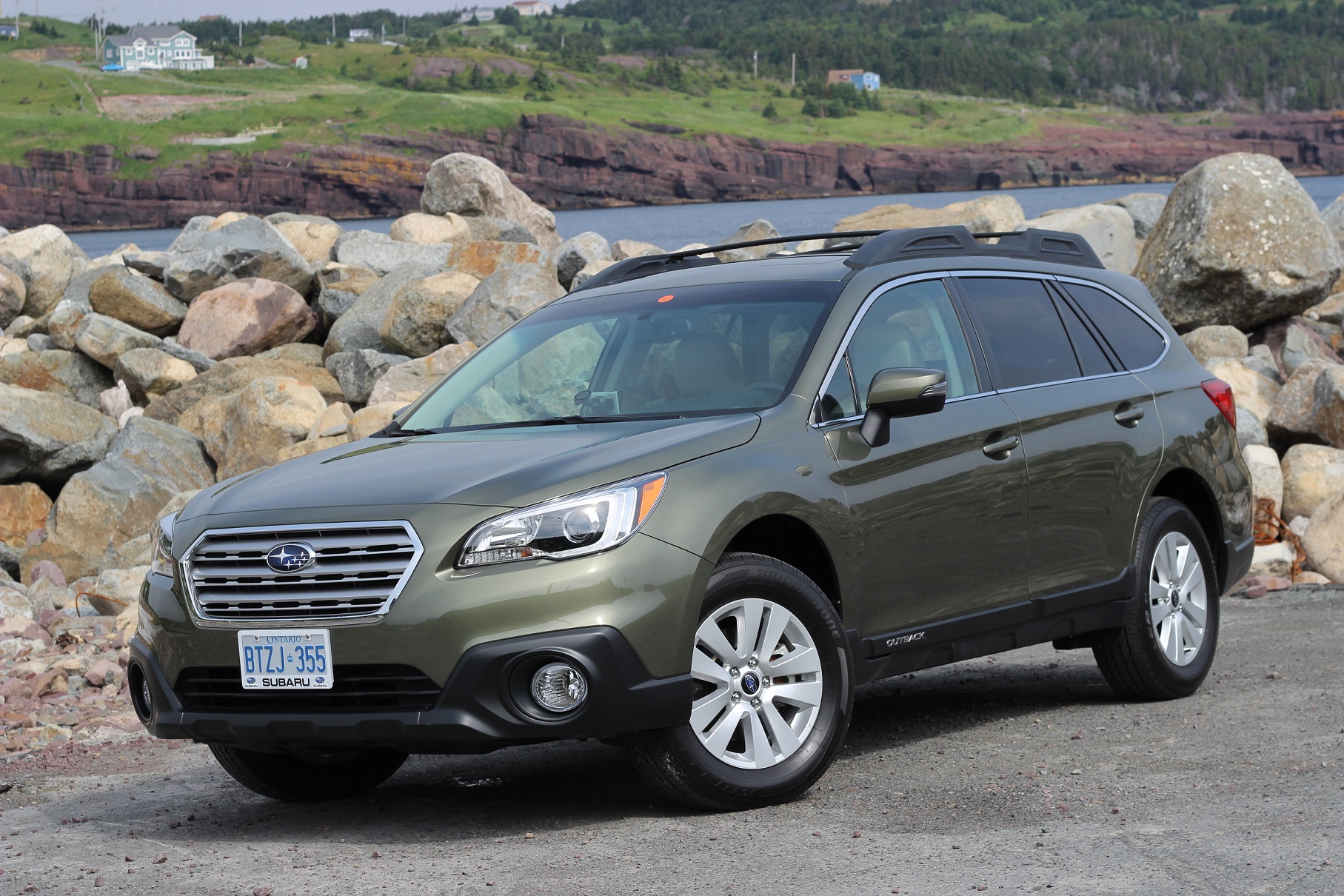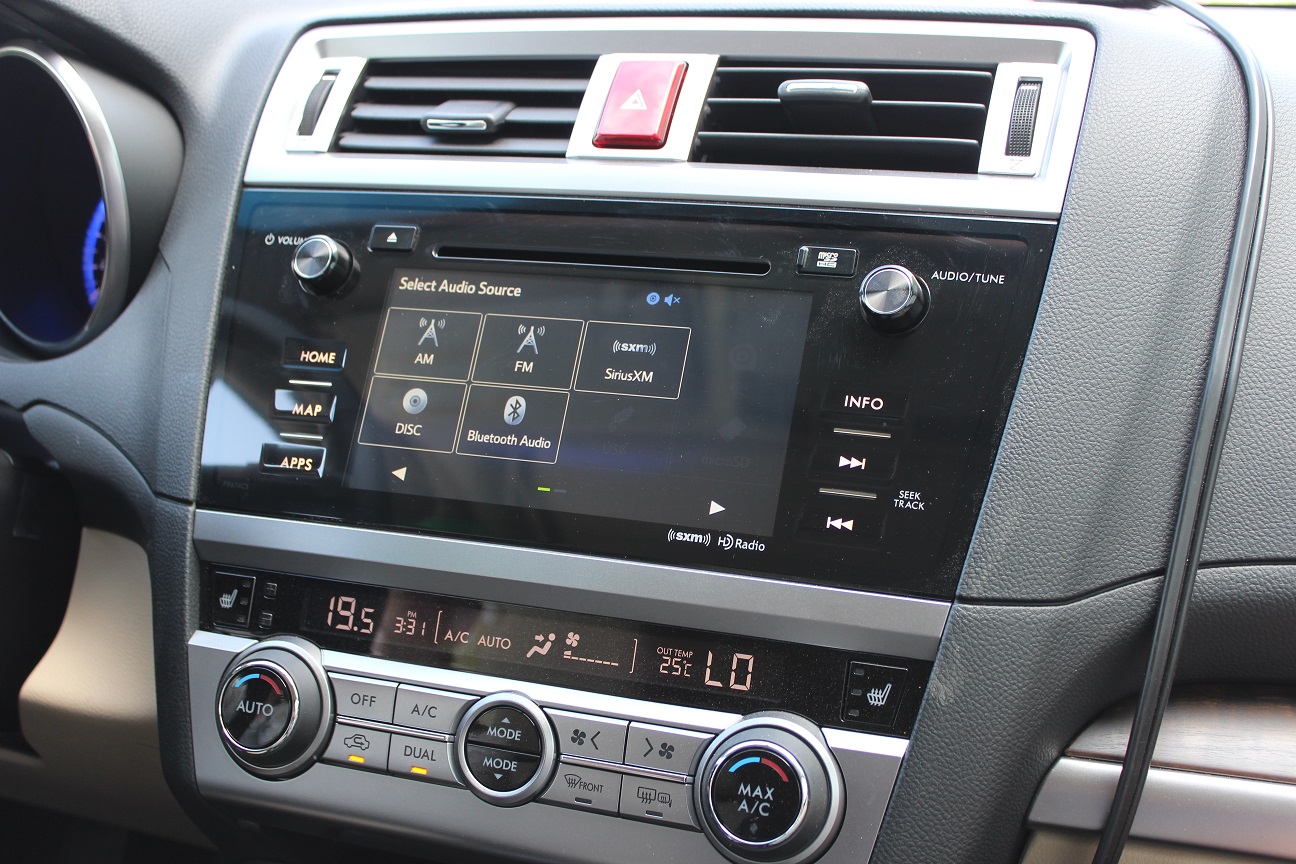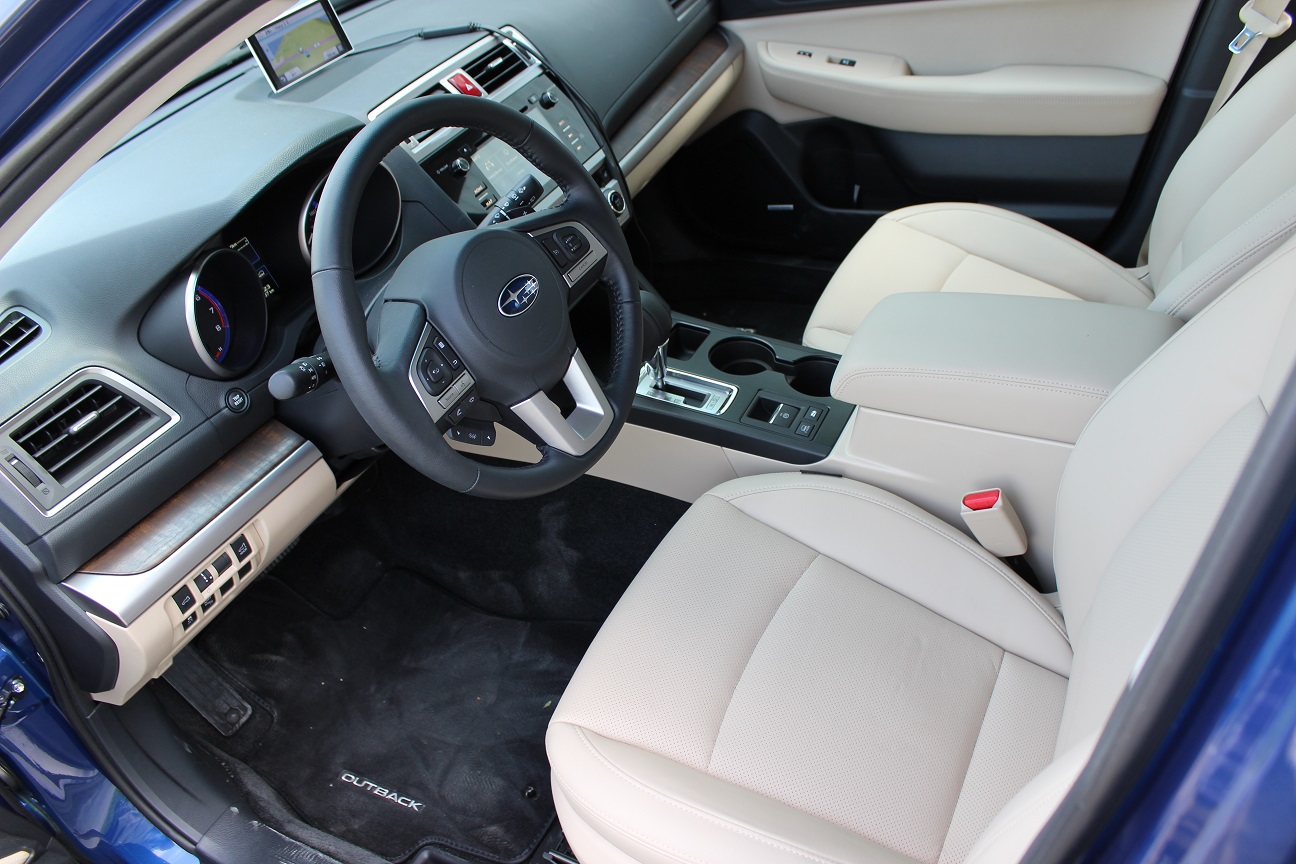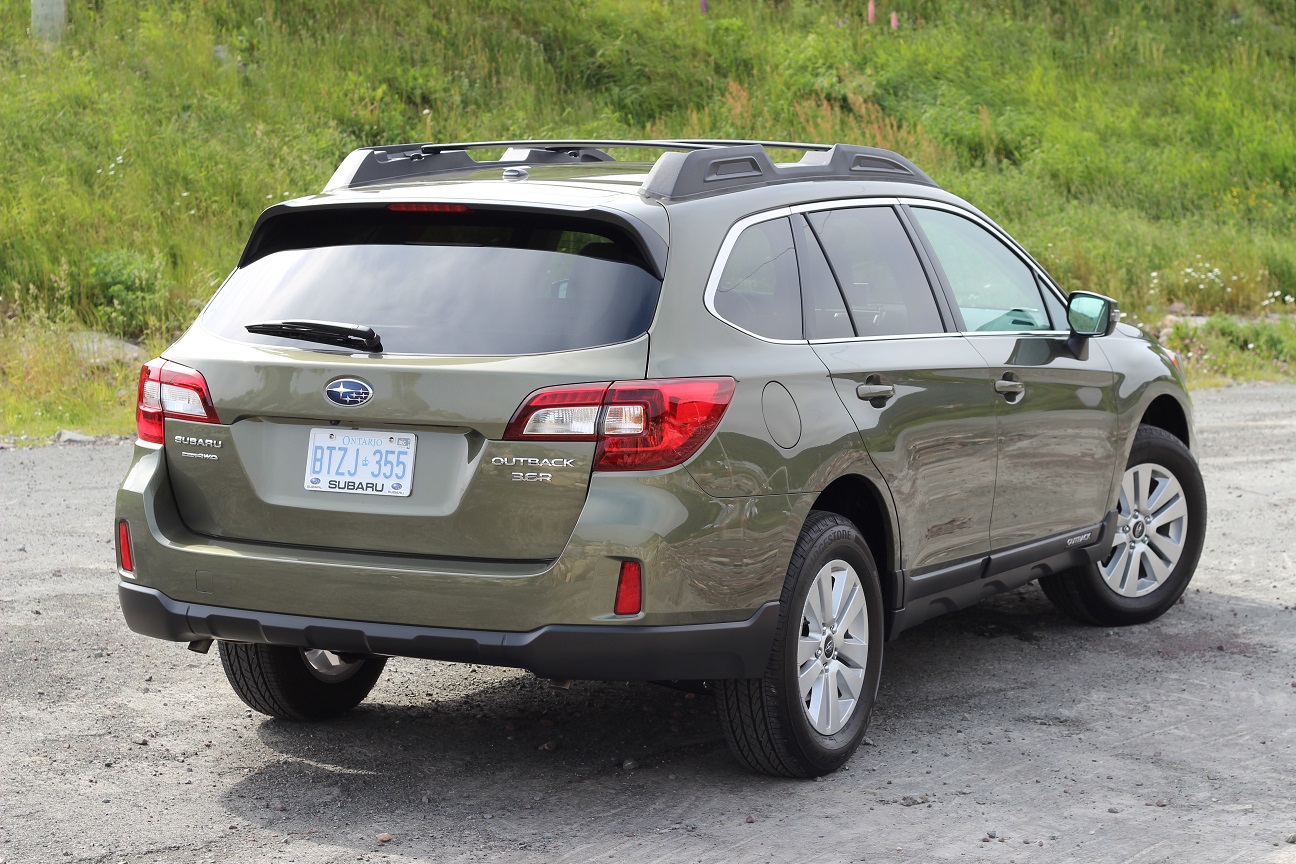First Drive - 2015 Subaru Outback
- Written by Dan Heyman
- Published in CAR REVIEWS
- font size decrease font size increase font size
- Be the first to comment!

If you have ever questioned the continued viability of the station wagon in this crossover-crazed market, know that Subaru has been building its Outback wagon for 20 years now, without pause.
Now in its fifth-generation for 2015, it has become more capable than ever thanks to a host of chassis and drivetrain upgrades.
Seven trims are available, starting with the base 2.5i at $27,995 ($29,295 with an auto transmission), on to the 2.5i Touring ($31,995, or $32,495 with an auto), 2.5i Limited ($35,895). You get a flat-6 with two trims; 3.6R Touring ($35,495) and 3.6R Limited ($38,895). The $1,200 Tech package which adds EyeSight safety (distance cruise control, rear cross-traffic alert, lane-change assist), keyless go and fog lights that swivel when you turn the wheel can be added to all trims apart from the 3.6R Touring and 2.5i base, which can be upgraded to PZEV level for $700. That adds a second catalytic converter, reducing emissions.
Subaru buyers seem to be perfectly fine with all trims having that wagon-on-stilts, plastic-clad look., which is a big reason they continue to go to Subaru. However, the challenge for Subaru will be if new customers will have the same outlook?
That’s not to say there aren't any stylistic changes; like its recently-revealed Legacy cousin, the Outback receives a new grille, LED taillights, a more steeply-raked windshield and door-mounted wing mirrors fitted with LED turn indicators, providing better outward visibility. Oh, and the new two-tone 18-inch wheels (standard on Limited models) are properly handsome numbers, too.
 Inside, you’ll find the benefits of Subaru’s commitment on a more luxurious, stylish and feature-rich interior. That means two all-new infotainment systems, one of which features a seven-inch iPad-esque display that can be swiped and pinched to your heart’s content. You’ll need the Limited package of either the 2.5i or 3.6R models for that.
Inside, you’ll find the benefits of Subaru’s commitment on a more luxurious, stylish and feature-rich interior. That means two all-new infotainment systems, one of which features a seven-inch iPad-esque display that can be swiped and pinched to your heart’s content. You’ll need the Limited package of either the 2.5i or 3.6R models for that.
Meanwhile, new front seats are comfortable over the long haul, though they may be a little flat for some. They also feature a proprietary airbag system; in the event of a collision, an airbag deploys from the seat cushion and keeps the body properly placed, so the rest of the airbags can do their work.
 Cargo room has been upped to 1,005L, 33 more than the outgoing model.
Cargo room has been upped to 1,005L, 33 more than the outgoing model.
Both the four-cylinder and six-cylinder engines are carryovers from last year, but new cylinder heads, connecting rods and pistons on the flat-four and new connecting rods on the 3.6 lead to more efficient progress. The 3.6 makes 256 hp, the flat-four, 175.
Power comes on smoothly with the V6 (there’s even a hint of classic “Boxer burble”) and there's a little more spike with the four. Trouble is, I’m not sure which to recommend; the six is a bit thirsty, and the four a bit noisy without having the luxury to make high-speed highway passes with it.
The Continuously-Variable transmission (CVT) and its “step-shifting” make up for this a little; there are eight “virtual” ratios when you’re pressing, and six at lower speeds. Subaru says their market research shows that people still like feeling a car shifting, and it also makes the standard paddles more rewarding to use.
Still, I would like to see how the excellent 2.0 turbo-four from the Forester XT would perform in this application. Remember; Subaru has used turbo power for the Outback before, and in this age of turbo-everything, it seems like a no-brainer.
On most cars, power will be transmitted through a CVT automatic, but a six-speed manual is still available at the base 2.5i level.
 What really sets the new car apart from the old one is its quiet ride on the highway. New acoustic windshield glass, smaller separation gaps and the addition of noise-reducing foam in the wheel wells contributes to the calmness while driving the Outback.
What really sets the new car apart from the old one is its quiet ride on the highway. New acoustic windshield glass, smaller separation gaps and the addition of noise-reducing foam in the wheel wells contributes to the calmness while driving the Outback.
Torsion is up 59 per cent and bending up 35 per cent thanks to more use of high-tensile steel. This helps with that quiet ride, but also with the Outback’s off-road prowess.
Which, as we’d find out on a test track normally occupied by ATVs and dirt bikes, is excellent.
The addition of X-Mode AWD, first seen on the Forester, plays a big part, here. As soon as you activate it by pressing a button mounted just below the gear shift, hill descent and ascent aids can pull you over humps without any input whatsoever.
It’s a bit of an eerie feeling at first (the sensation is like an old ABS system) but once you let it do its thing, the Outback shines.
Grades over rocks that are normally reserved for Jeep Wrangler’s and the like—not long-wheelbase wagons—are taken in stride. You can climb steep grades from a standstill, and thanks to the tall (20-inch) ride height and low approach angles, you can plunge down the same grade without bottoming out.
Better still, since everything is tucked up nicely into the chassis, there’s much less chance of puncturing a radiator or oil pan off the road. Better fuel economy is had, as air is allowed to pass beneath more smoothly on the road.
The 2015 Outback is comfortable, capable and well-equipped and if it weren’t for the noisy operation of the four-banger and the thirsty operation of the six, it would tick all the right boxes.
